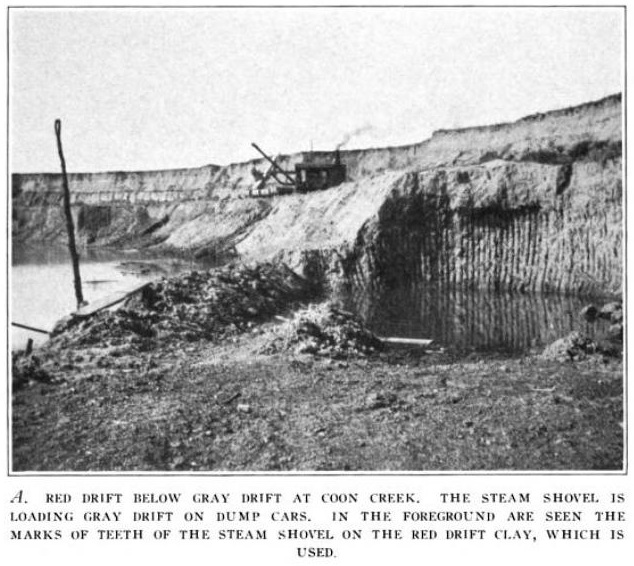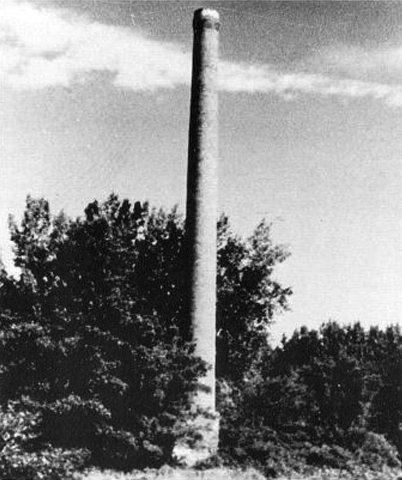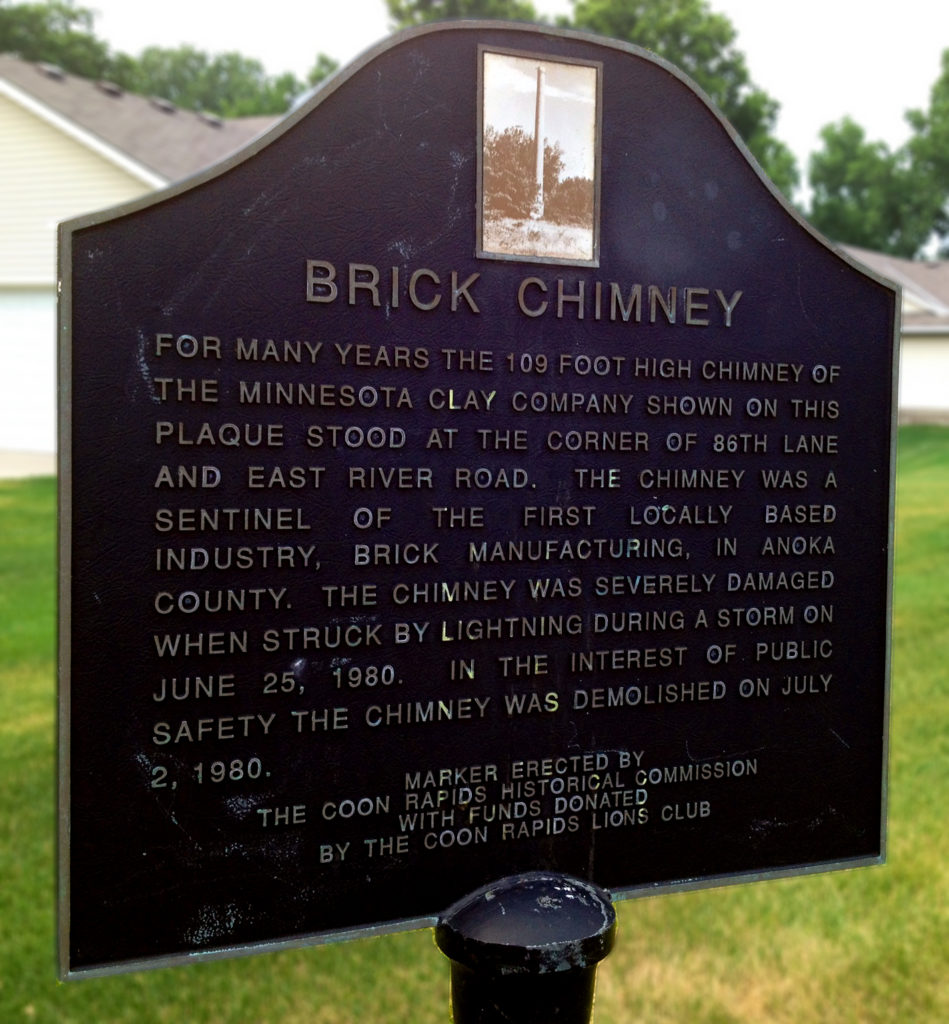The Brickyards of Coon Rapids
The first road through Anoka County was established in 1835 to aid those traveling between Minneapolis and Anoka. The road was commonly known as the Red River Ox Cart Trail, now East River Road and Coon Rapids Boulevard, followed the Mississippi River north before turning toward Anoka. The journey took about two days by horse or wagon and rambled through farmland, forest, and peat bogs. Along this road is where the first locally based industry in Coon Rapids was located–the brickyards. Today, barely a trace of the brickyards remain. But for the curious, a few clues can still be found. The first brickyard in Coon Rapids was the Anoka Pressed Brick and Terra Cotta Company.
In 1881, Dr. D.C. Dunham located a large deposit of red clay not far off of the Red River Ox Cart Trail. The company only employed a handful of workers. Even though they used the best machinery of the day, it was still an extremely laborious job. Workers dug clay from a pit by hand and used a crane to bring it to the surface. After being excavated, the clay would be transported on a track, unloaded, mixed with water, and then sent through a machine with rollers to compact it into a ribbon as thick as a brick. Wires were used to cut individual brick lengths from the ribbon of clay. The bricks were then piled by hand and fan dried with hot air until the outside was dry and set. Finally, the bricks were placed in a large coal-fired kiln where the brick was burned. It would take several days for the fires to temper the brick. When the process was complete, each brick weighed about 5.5 pounds.
Today, the only remnant of this very successful venture is the Al Flynn Pond (known to local residents as the clay hole) near Coon Rapids Boulevard and 100th Lane NW. In 1888, workers digging clay struck an underground spring at about 90 feet down. The pit quickly filled with water and the brick-making at the Anoka Pressed Brick and Terra Cotta Company came to a stop. By the 1930s the water-filled pit had become a popular swimming hole for local residents until the 1990s when it was closed because of water safety concerns. It’s rumored that the crane or the steam shovel used for digging is still at the bottom of the pit.



The largest and longest-running brick making operation in Coon Rapids was also located along the Red River Ox Cart Trail. Perched on the banks of the Coon Creek near the Mississippi River, the Minnesota Clay Company employed over 100 workers. By 1885 they produced nearly 60,000 bricks per day using the same process as the Anoka Pressed Brick and Terra Cotta Company. Workers would dig clay from the banks of the Mississippi River, but they had to be careful not to dig too deep because the clay gave way to quicksand at a depth of about 25 feet. After the clay was formed into bricks and dried, it was sent to several large coal-fired kilns along the Red River Ox Cart Trail to be burned. The Minnesota Clay Company produced bricks for about 25 years before running out of high-quality red clay. The company’s kilns were used for several more years by the Minnesota Ceramics Company until about 1935. The kilns were dismantled, but one of the 109-foot chimneys remained.
For almost 50 years the chimney stood abandoned and surrounded by trees on the corner of East River Road and 86th Lane NW. During a thunderstorm on June 25, 1980, the chimney was struck by lightning and severely damaged. The City of Coon Rapids deemed the damaged chimney a safety risk and demolished the last structural remnant of the brick-making industry in Coon Rapids on July 2, 1980. A historical marker now stands near where the chimney had been.
The Coon Rapids brickyards produced some of the finest bricks in the region between 1881 and 1920. The rich red color became very popular and was requested by builders as far away as St. Louis. However, you don’t have to drive very far to see these fine bricks still in use. The highest concentration of buildings made from Coon Rapids brick is in downtown Anoka.
